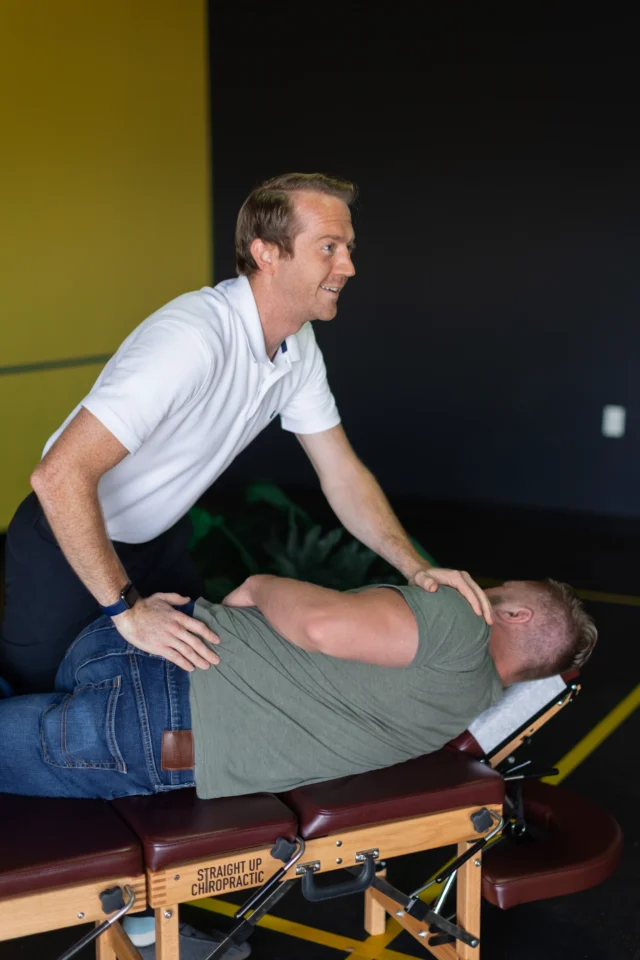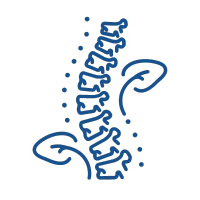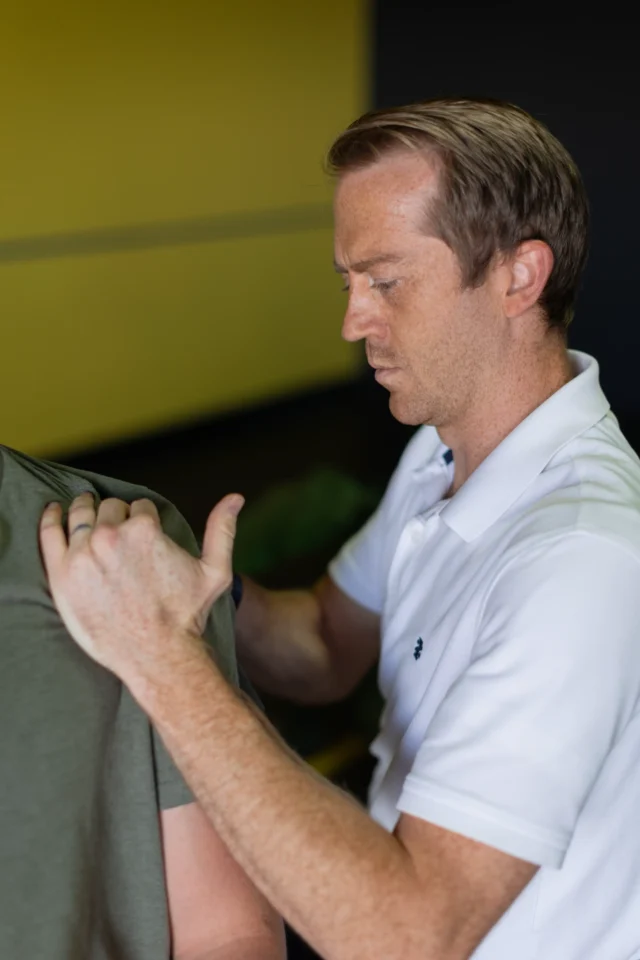The overhead press is a fundamental movement that builds strength and stability throughout your upper body. But when shoulder pain strikes during this exercise, it can derail your fitness goals and leave you wondering what went wrong. If you’re experiencing discomfort during shoulder workouts, you’re not alone—and more importantly, you don’t have to live with it.
This comprehensive guide explores the common causes of shoulder pain during overhead movements, introduces advanced treatment techniques that address the root causes, and provides actionable solutions to help you return to pain-free training. Whether you’re dealing with acute pain or chronic shoulder issues, understanding the underlying mechanisms and available treatments can transform your approach to shoulder health.
Understanding Shoulder Pain from Overhead Press
The shoulder joint is remarkably complex, involving multiple bones, muscles, tendons, and ligaments working in perfect coordination. When you raise your arms overhead, this intricate system must function flawlessly to provide both mobility and stability. Any disruption in this delicate balance can result in pain, limited range of motion, and compromised performance.
Overhead pressing movements demand exceptional shoulder mobility and stability. The joint must allow your arm to move through a full range of motion while maintaining proper alignment and control. This requires coordinated effort from the rotator cuff muscles, deltoids, trapezius, and numerous other supporting muscles.
When pain occurs during overhead movements, it’s often a sign that something has disrupted this coordination. The pain may be sharp and immediate, or it might develop gradually over time. Understanding the difference between normal muscle fatigue and problematic pain is crucial for preventing minor issues from becoming major problems.
Many athletes and fitness enthusiasts push through shoulder discomfort, assuming it’s part of the training process. However, pain during overhead movements is never normal and should be addressed promptly. Early intervention can prevent minor dysfunctions from progressing to more serious conditions that require extensive treatment.
Common Causes of Shoulder Pain During Overhead Movements
Several factors can contribute to shoulder pain during overhead press exercises. Identifying the specific cause is essential for developing an effective treatment plan.
Muscle Imbalances and Weakness
The shoulder joint relies on balanced strength between opposing muscle groups. When certain muscles become weak or inhibited, others must compensate, creating imbalances that can lead to pain and dysfunction. The rotator cuff muscles, which provide stability to the shoulder joint, are particularly vulnerable to weakness and imbalance.
Common imbalances include weak posterior deltoids compared to anterior deltoids, inhibited rotator cuff muscles, and tight chest muscles that pull the shoulders forward. These imbalances alter the normal mechanics of overhead movement, placing excessive stress on certain structures while others remain underutilized.
Poor Posture and Alignment
Modern lifestyles often promote forward head posture and rounded shoulders, which significantly impact shoulder function. When your shoulders are positioned incorrectly, the overhead motion becomes mechanically disadvantageous and can cause impingement of soft tissues.
Poor posture affects the scapular muscles that control shoulder blade movement. These muscles must work properly to create a stable base for arm movement. When posture is compromised, the scapular muscles can’t function optimally, leading to compensatory patterns that stress the shoulder joint.
Previous Injuries and Scar Tissue
Old injuries, even minor ones, can have lasting effects on shoulder function. Scar tissue formation following injury can restrict normal tissue movement and alter muscle function. Sometimes people don’t even remember the original injury, but the compensatory patterns persist.
Adhesions in the joint capsule or surrounding soft tissues can limit range of motion and create painful restrictions during overhead movements. These adhesions may develop following injury, surgery, or periods of immobility.
Neurological Inhibition
The nervous system plays a crucial role in muscle function and coordination. When nerves are irritated or compressed, they can cause muscle inhibition—a condition where muscles don’t activate properly even though they’re not structurally damaged.
Neurological inhibition can result from spinal misalignments, nerve compression, or disrupted communication between the brain and muscles. This leads to altered movement patterns and compensatory mechanisms that can cause pain during overhead activities.
The Stages of Shoulder Dysfunction
Understanding how shoulder problems develop helps explain why some people experience intermittent pain while others develop chronic conditions. Shoulder dysfunction typically progresses through identifiable stages, each with characteristic symptoms and limitations.
Stage 1: Initial Dysfunction
The first stage involves subtle changes in muscle function and movement patterns. You might notice slight discomfort during certain movements or feel like your shoulder “doesn’t move quite right.” Range of motion may be minimally affected, and pain is usually mild and intermittent.
During this stage, the body begins developing compensatory patterns to avoid painful movements. These adaptations may temporarily reduce symptoms but create imbalances that contribute to progression to more advanced stages.
Stage 2: Developing Limitations
As dysfunction progresses, pain becomes more frequent and noticeable. Range of motion begins to decrease, particularly in overhead movements. You might start avoiding certain exercises or modifying your training to work around the limitations.
Sleep disturbances may begin during this stage, especially if you sleep on the affected side. The shoulder may feel stiff in the morning or after periods of inactivity. Muscle imbalances become more pronounced, and compensatory patterns become more entrenched.
Stage 3: Significant Impairment
Advanced dysfunction involves substantial pain and movement restrictions. Overhead activities become difficult or impossible, and pain may occur even during simple daily tasks. Sleep is frequently disrupted, and you may experience referred pain down your arm or into your neck and upper back.
The shoulder joint capsule may begin to tighten and adhere to surrounding tissues, creating additional restrictions. Muscle weakness becomes more apparent, and the entire upper body may be affected as compensatory patterns spread to other areas.
AMIT and NPI: Advanced Treatment Techniques
Traditional approaches to shoulder pain often focus on symptom management rather than addressing underlying causes. Dr. Gavin Hall at Straight Up Chiropractic utilizes advanced techniques that target the root causes of shoulder dysfunction, providing more effective and lasting relief.
Advanced Muscle Integration Technique (AMIT)
AMIT is a specialized diagnostic and treatment approach that identifies and corrects muscle imbalances contributing to shoulder dysfunction. This technique recognizes that muscle inhibition—not just weakness—is often the primary problem underlying shoulder pain.
When muscles become inhibited due to injury, stress, or dysfunction, they don’t activate properly even when they appear strong during manual testing. AMIT uses specific testing procedures to identify inhibited muscles and then employs targeted treatments to restore proper function.
The AMIT approach to shoulder pain involves testing all muscles that contribute to shoulder function, including those that might seem unrelated to the problem. This comprehensive assessment often reveals inhibition patterns that traditional evaluations miss. Once inhibited muscles are identified, specific treatments restore their ability to function properly.
Neural Pathway Integration (NPI)
NPI addresses the neurological components of shoulder dysfunction by restoring proper communication between the brain and muscles. This gentle, non-invasive technique recognizes that many movement problems stem from disrupted neurological pathways rather than structural damage.
The technique involves identifying areas where nerve function has been compromised and using specific treatments to restore normal neurological communication. This can result in immediate improvements in range of motion and pain reduction as the nervous system begins functioning more effectively.
NPI is particularly effective for addressing chronic shoulder problems that haven’t responded well to other treatments. By targeting the neurological aspects of dysfunction, this approach can unlock improvements that structural treatments alone cannot achieve.
Comprehensive Integration
The combination of AMIT and NPI creates a comprehensive treatment approach that addresses both the muscular and neurological aspects of shoulder dysfunction. This integrated approach often produces results more quickly and effectively than traditional methods.
Dr. Hall’s expertise in both techniques makes him uniquely qualified to provide this advanced level of care. As one of only two practitioners in Southern Utah trained in AMIT and the only chiropractor in the area certified in NPI, he offers access to cutting-edge treatments that aren’t available elsewhere in the region.
Benefits of AMIT and NPI for Shoulder Pain
Patients receiving AMIT and NPI treatment for shoulder pain experience several distinct advantages over traditional approaches. These benefits extend beyond simple pain relief to encompass improved function, enhanced performance, and long-term prevention of future problems.
Faster Recovery Times
By addressing the underlying causes of shoulder dysfunction rather than just managing symptoms, AMIT and NPI often produce results more quickly than conventional treatments. Many patients notice improvements in pain and range of motion within the first few treatment sessions.
This faster recovery occurs because the techniques restore proper muscle and nerve function, allowing the body’s natural healing processes to work more effectively. Instead of working against dysfunctional patterns, the body can focus its energy on healing and repair.
Improved Functional Movement
The goal of AMIT and NPI treatment extends beyond pain relief to restoration of optimal function. Patients often regain better range of motion and strength than they had before developing shoulder problems. This improved function translates directly to better performance in both athletic activities and daily tasks.
The techniques address movement patterns at their source, correcting the underlying imbalances that contribute to dysfunction. This comprehensive approach ensures that improvements are lasting and that patients can return to their desired activities without fear of re-injury.
Prevention of Future Problems
By correcting the muscle imbalances and neurological dysfunctions that contribute to shoulder problems, AMIT and NPI help prevent future episodes of pain and dysfunction. This preventive benefit is particularly valuable for athletes and active individuals who want to maintain their performance long-term.
The techniques teach the body to move more efficiently and effectively, reducing the stress placed on shoulder structures during daily activities and exercise. This improved movement efficiency helps prevent the development of new problems while maintaining the gains achieved through treatment.
Why Choose Straight Up Chiropractic for Shoulder Pain
Straight Up Chiropractic offers a unique approach to shoulder pain treatment that goes beyond traditional chiropractic care. Dr. Gavin Hall’s specialized training and comprehensive treatment philosophy provide patients with access to advanced techniques and personalized care that addresses their specific needs.
Specialized Expertise
Dr. Hall’s training in both AMIT and NPI makes him uniquely qualified to address complex shoulder problems. His expertise in these advanced techniques, combined with his comprehensive understanding of human movement, allows him to identify and treat problems that other practitioners might miss.
The combination of specialized knowledge and practical experience enables Dr. Hall to develop treatment plans that are both effective and efficient. Patients benefit from his ability to quickly identify the root causes of their problems and implement targeted solutions.
Take the first step toward a healthier, more fulfilling life today. Schedule your consultation with Dr. Hall to explore how personalized chiropractic care can help you achieve lasting relief and improved well-being. Don’t wait—start your wellness journey now and experience the difference that dedicated, holistic care can make in your life. Contact us today to book your appointment!



